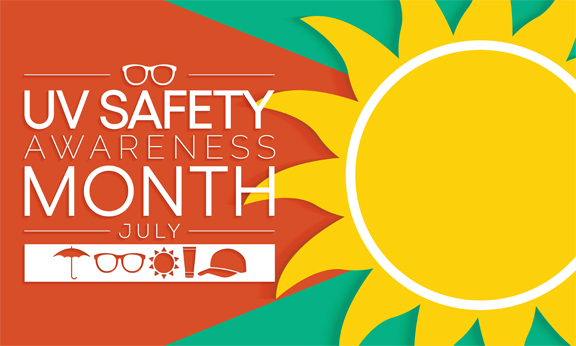It’s UV Safety Awareness Month
July is recognized as UV Safety Awareness Month by the Centers for Disease Control and Prevention (CDC); NYCHA’s Environmental Health and Safety Department would like to share the following information on this topic to help you and your family stay safe. The CDC defines ultraviolet (UV) rays as an invisible form of radiation that is part of sunlight. Protection from UV rays is critical because these rays can penetrate and change the structure of skin cells. Sun protection is needed year-round because sun exposure adds up.
UV Index Forecasts
The National Weather Service and the U.S. Environmental Protection Agency issue daily UV Index forecasts that are often on television, radio, and online – you can these forecasts to plan your outdoor activities and prevent sun overexposure.

Safety Tips
Here are the American Cancer Society’s recommendations for limiting UV exposure outdoors, especially when the UV index is 3 or higher:
- Slip on a shirt. Wear long-sleeved shirts and long pants and skirts, which can provide protection from UV rays.
- Slop on sunscreen. Apply SPF 15 or higher before you go outside. Be sure to reapply if you are in the sun more than two hours and after swimming, sweating, or toweling off.
- Slap on a hat. Wear a hat that has a brim all the way around to shade your face and the back of your neck. A darker hat may offer more UV protection.
- Wear sunglasses. Wrap-around sunglasses protect the eyes and skin around them.
- Avoid scheduling outdoor activities when the sun is the strongest. In the continental United States, UV rays tend to be strongest from 10 AM to 4 PM.
Since children tend to spend more time outdoors, they need special protection from UV rays. When preparing children for sun exposure and fun outside, using sunscreen on exposed skin and wearing a hat and long-sleeved clothing should be a habit. Babies younger than 6 months should be kept out of direct sunlight and protected from the sun using hats and protective clothing; sunscreen may be used on small areas of exposed skin only if adequate clothing and shade are not available.

Sun Exposure and Vitamin D
Whenever possible, it’s better to get vitamin D from your diet or vitamin supplements rather than sun exposure, because dietary sources and vitamin supplements do not increase skin cancer risk.
Avoid Tanning Beds/Sun Lamps
Many people believe that the UV rays of tanning beds are harmless. This is not true. Tanning lamps give out UVA rays, and tanning bed use has been linked with an increased risk of melanoma (especially if use starts before age 30).

If you have questions about this or any environmental health and safety matter, please email ehs@nycha.nyc.gov. Residents, employees, and any member of the public can submit environmental health and safety concerns via on.nyc.gov/submit-concern.
For more information on UV safety, please visit:

